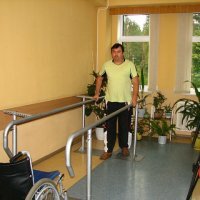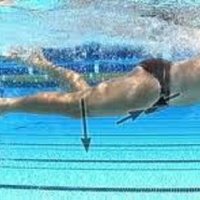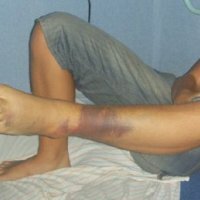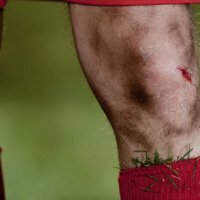Rehabilitation after spinal cord injuries

When a spinal cord injury occurs, as a rule, damage to the pathways( conducting) of the spinal cord occurs. In this case, the mechanism of injury may be associated with the compression of bone fragments of the vertebrae or intervertebral discs, direct injury, and squeezing with hematoma( this accumulation of blood).After injuries to the spinal cord, mandatory rehabilitation is necessary. For patients after spinal cord injuries, the main goal of rehabilitation is to maximize recovery of functions lost after the disease. Recovery is shown even in the absence of the ability to restore the functions of the spine completely, to teach the patient to live in new conditions for him and to give hope to a person to restore the former functions. The maximum independence and freedom is called upon to give the patient rehabilitation in all spheres of life.
What is rehabilitation( recovery) after spinal cord injuries
In medicine, in our time, there are multiple confirmations that, even with complete disruption of the integrity of the spinal cord, there is a chance for partial restoration of certain functions that are lost due to trauma. In such patients, the rehabilitation period depends on the level, severity, as well as the duration of the spine injury, age, from the start of the rehabilitation program.
If the spinal cord is damaged, the main consequence leading to disability is considered to be impaired motor functions - complete paralysis( tetraparesis) or paralysis of the lower extremities, depending on the degree, level of spinal cord injury. Recovery in these patients, first of all, is aimed at restoring the motor activity. Various rehabilitation measures can be carried out on an outpatient basis and in a hospital.
If the rehabilitation is not performed after these injuries, then the patient, and with him, in most cases, and his relatives are doomed to a long process of self-treatment, and he can sometimes end in serious complications. Improving the patient's ability to live normally among the family and the community, even with the residual effects of disabilities, is the common goal of rehabilitation after trauma.
Recovery to a patient helps to adapt to their limited abilities or to change their life's space and conditions. It is necessary to make everyday life easier even with large neurological disorders after spinal cord injury.
Recovery helps a patient adapt to his limited abilities or change his living space, also conditions to make everyday activities easier even with severe neurological disorders after a spinal cord injury.
An important point in the rehabilitation period is prevention, detection, as well as treatment of complications, consequences of spinal cord injury. These are the following complications: different septic-septic lesions( pressure ulcers, long lying man, pneumonia, urinary tract infections and sepsis), deep vein thrombosis with pulmonary embolism, and spastic syndrome. Each of these complications can lead to death. The early start of the rehabilitation period helps prevent a deeper disability of the patient and enables a person to return to normal life faster.
Rehabilitation after such injuries is as follows. This training of new skills, retraining abilities and skills, adapting to the emotional, social, and physical consequences of ischemic stroke.
There are different specialists involved in the rehabilitation process: nurses, consultants, doctors, physiotherapists, speech therapists, neuropsychology. Modern medical achievements are used, which makes it possible to achieve the maximum recovery after spinal cord injuries. Rehabilitation should take place mainly in specially equipped institutions. Widely used physiotherapy, special physical training, etc. The course of recovery can last up to 9 months, depending on the severity of the injury.
Basic skills that need to be restored in the process of rehabilitation: ceding for themselves( feeding, washing, dressing, etc.), doing toilet( bladder care), moving( walking or steering wheelchairs), psychological endurance.



